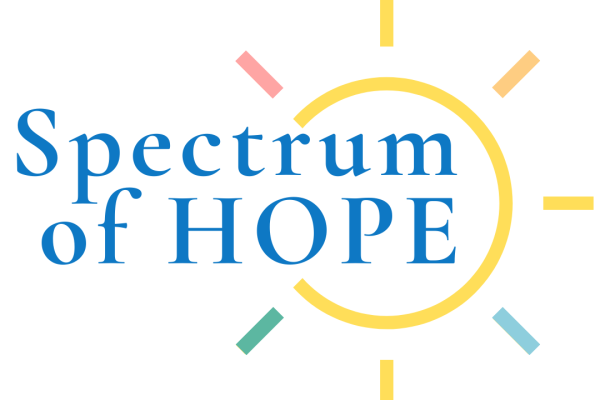What is Applied Behavioral Analysis Therapy?
Applied Behavior Analysis (ABA) is the application of behavioral principles to solve problems of social significance. This means that the application of these principles can work to increase appropriate skills or decrease the presence of inappropriate behaviors that will improve the overall quality of life. Some common areas of focus are communication skills, language skills, play skills, social skills, self-care skills and the reduction of behaviors that impede the ability to acquire skills such as aggression, self-injurious behaviors and self-stimulatory behaviors. The principles of ABA therapy are derived from years of research that has shown to be effective in the treatment of the characteristics or deficits of autism and other related behavioral disorders.
ABA Therapy utilizes data to make decisions
Progress towards autism treatment goals is monitored closely by behavior analysts through the collection and analysis of data collected during treatment. As an individual demonstrates progress towards goals through the analysis of data, treatment goals are updated or interventions are faded out to increase the independence of the individual.
ABA Therapy is comprised of many behavioral principles and components
At Spectrum of Hope, we do not just employ one strategy or ‘type’ of ABA, but design interventions that are based on the most current research that utilize an abundance of principles/components.
Some common components of ABA programs:
- Reinforcement
- Prompting
- Antecedent manipulation
- Natural environment teaching
- and many more…
ABA Therapy is effective and considered the gold standard for autism treatment
ABA is comprised of many behavioral principles and components. At Spectrum of Hope, we do not just employ one strategy or ‘type’ of ABA, but design interventions that are based on the most current research that utilize an abundance of principles/components.
ABA Therapy has been endorsed by the American Academy of Pediatrics and the U.S. Surgeon General for its effectiveness with individuals with autism.
The principles of ABA therapy are derived from years of research that has shown to be effective in the treatment of the characteristics or deficits of autism and other related behavioral disorders.
ABA programs are designed by a Board-Certified Behavior Analyst
Following a skills assessment and/or a behavioral assessment, the BCBA will develop specific treatment goals that are individualized based on the specific needs of the individual incorporating their strengths, preferences, and family input.
Common areas for treatment goals:
- Communication and language skills
- Social skills
- Play skills
- Self-care skills
- Reduction of inappropriate behaviors

Treatment goals are broken down into smaller steps and build upon previous steps to achieve an overall goal. (Example: Initially teaching an individual to request using one word to ultimately carrying on a conversation. Another example would be teaching an individual to attend to an activity for 30 seconds to ultimately engaging in a social activity with a peer for an extended duration of time.)
ABA treatments and strategies are individualized for each client
Each individual’s behavior is analyzed and modified according to the individual’s specific needs and abilities. There is no treatment or strategy that will work with every person, therefore behavior analysts tailor treatment approaches and teaching strategies so that they are effective for the individual.
The amount of Applied Behavior Analysis that is recommended for an individual varies based on specific needs and interventions required. Research typically supports a minimum of 25 hours per week up to 40 hours per week a year.
ABA Therapy involves the entire family unit.
Parent involvement is a huge component of ABA treatment. Parents are a part of the treatment team and can provide information to the BCBA and treatment team that helps to guide the treatment plan.
Parents should also receive training in the principles of Applied Behavior Analysis and in specifics of their child’s treatment plan in order to make sure that learned skills carry over to other environments.
Understanding ABA principles and training should not stop at just the parents. Caregivers, siblings and other professionals that are highly involved in the care of the individual should also be involved.
How Does ABA Therapy Work?
ABA therapy is widely regarded as one of the best treatments for autism because each plan is personalized to help recipients on an individual basis. This type of therapy focuses on developing critical skills for self-sufficiency, communication and physical independence. The treatment is designed to help the individual better function and communicate their needs in a world that’s built for a neurotypical population.
ABA’s patient-centric approach is effective because it allows each individual to focus on their own unique strengths, weaknesses, needs and abilities. Progress is measured based on personal starting points rather than comparisons with peers.
ABA therapy begins with a careful assessment and analysis to better understand what the recipient needs from their treatment. BCBAs use this information to create a plan that breaks down each goal into small, concrete steps that can be encouraged through consistent positive reinforcement. Desirable behavior is immediately followed by a reward. This approach encourages the individual to make positive behavioral changes over time.
At Spectrum of Hope, we design treatment plans for children with autism that are based on play. This approach provides a more comfortable, natural setting that is more conducive to learning and making progress. Children feel like they’re having fun, not just going through a therapy session. We also provide parents and caregivers with training that allows them to better understand the individual with autism and help to reinforce positive behaviors outside of therapy.
What Is the Evidence That ABA Therapy Works?
ABA has been used as the primary treatment for autism spectrum disorder since it was introduced in the late 1960s. While the methodologies of modern-day ABA have shifted, behavioral therapy for autism has been determined to be effective based on decades of studies and empirical research.
Today, ABA therapy is recognized as the gold standard for treatment by the American Psychological Association, the American Academy of Pediatrics and the U.S. Surgeon General. The overwhelming evidence that ABA therapy is effective lies in the countless positive results from individuals who have thrived with the help of this treatment.
ABA Therapy Success Rates for Autism
Because every individual with autism is unique, the success of their ABA therapy treatments will vary. We measure success based on how each individual has progressed from their initial evaluation. We reassess every six months and adjust treatment plans as needed for continued success.
ABA treatments are evidence-based, meaning this method has been tested scientifically and proven effective for many children, teens and adults with autism. These treatment plans are also driven by data analysis. Our behavioral specialists can easily evaluate your child’s progress toward concrete goals.
Find ABA Near You
ABA therapy provided by registered behavioral technicians (RBTs) and licensed BCBAs can provide opportunities for your child with autism to develop many critical skills. At Spectrum of Hope, we offer fully licensed autism treatment services specialized to your child’s unique abilities and goals.
Start the enrollment process today by filling out our online intake form or contact us with your questions. You can also give us a call to find out more about how our ABA therapy services can help you.
